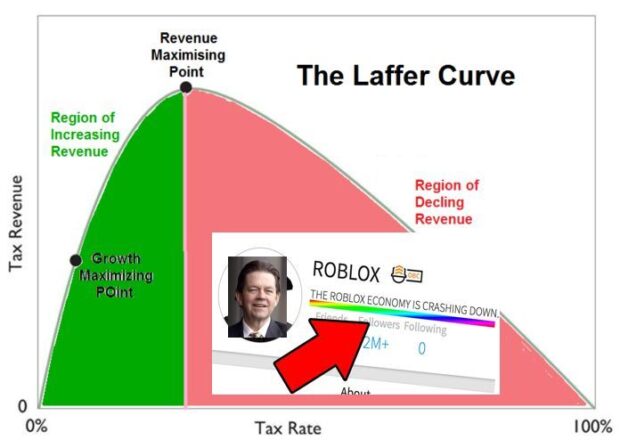
Why Every Mobile Game Studio Needs a Web Shop
AnalysisJournal 40 Joseph Kim July 8
The mobile gaming industry has just experienced its biggest economic shift since the launch of the App Store. Leading studios are capturing 40-50% of their revenue through web shops, while others struggle to achieve even 10%.
Key revelations from this discussion:
- The true cost of platform fees is 43% higher than most developers calculate
- Studios with strong web shops can outspend competitors by 10-15% on user acquisition
- The Epic ruling has eliminated anti-steering policies, opening unprecedented opportunities
- Winners focus on engagement and loyalty, not just payment processing
Also in this issue:
- Data: Horror Survival may be the next big genre opportunity

For those of you looking for the next breakout game genre, don’t sleep on survival horror!
Is the following data a harbinger of a nascent game genre?

超自然行动组 (English: Supernatural Operations Group) from Giant Network has seen a recent spike in downloads.
Imagine if you could get Five Nights RPD with Supernatural Operations Group downloads?
It seems like someone’s gonna crack some hits in this space.
How Direct-to-Consumer is Reshaping Mobile Gaming Economics
The 30% tax is dead. Long live the web shop.
In the wake of Epic’s landmark victory against Apple, mobile game developers are sitting on a goldmine of opportunity that could fundamentally reshape their economics. Yet most are still leaving millions on the table.
This conversation with Archie Stonehill, Stash’s Chief Growth Officer, laid bare just how transformative web shops have become for mobile gaming. The numbers are staggering: some games now generate over 50% of their revenue through web shops, with many anecdotal reports of significant positive impact on profit margins.
But here’s the kicker – this isn’t just about saving on platform fees anymore. It’s about competitive survival.
The Hidden Math That’s Killing Your Studio
Let’s start with a reality check that Stonehill delivered like a punch to the gut: Apple and Google are taking far more from you than you think.
Most developers believe the platforms take 30% of their revenue. Wrong. They take 30% of gross spend, not your net revenue. If you’re making $10 million, players are actually spending over $14 million. The platforms aren’t taking $3 million from your $10 million – they’re taking $4.3 million from that $14.3 million gross.
The math gets even more brutal when you consider the competitive landscape. Imagine two competing games:
- Studio A: Traditional app store only, keeping 70% of revenue
- Studio B: 25% of revenue through web shop at 90% margin
Studio B is capturing 10-15% more revenue from the exact same player spend. In the cutthroat world of mobile UA, where margins determine who can afford to acquire users, that’s not just an advantage – it’s an existential threat to Studio A.
As Stonehill put it bluntly: “If your competitor is getting 10 to 15% more revenue on average from its players, they can easily outbid you on CPIs.”
The Epic Ruling: A Tectonic Shift in Mobile Gaming
The recent court ruling against Apple isn’t just legal noise – it’s a fundamental reshaping of the mobile ecosystem. For the first time in the United States, developers can:
- Directly tell players about alternative payment methods inside their apps
- Link directly to web shops without restriction
- Communicate freely about better deals outside the app
This demolishes what Stonehill calls the “anti-steering policies” that have shackled developers for over a decade. Before this ruling, you couldn’t even email your own users about alternative purchase options if you’d acquired their contact through the app.
The geographic complexity adds another layer: this ruling only applies to iOS in the US. Android has its own ongoing legal battles, and Europe is pursuing even more aggressive regulatory changes through the Digital Markets Act. Smart studios are already building regionalized strategies to maximize opportunities in each market.
The Three Pillars of Web Shop Dominance
Based on the discussion, successful web shops aren’t just payment portals – they’re engagement ecosystems built on three critical pillars:
1. Margin Expansion
The obvious benefit: reducing payment processing from 30% to 5-10% instantly improves unit economics. But the real power comes from reinvesting that margin into user acquisition. When you can spend 20% more per user while maintaining the same ROI targets, you win the UA wars.
2. Data Ownership
This is where things get strategic. Web shop customers are your customers, not Apple’s or Google’s. You get:
- Direct email access for re-engagement campaigns
- Deterministic attribution for better UA decisions
- Rich behavioral data for lookalike audiences
- Cross-game player relationships for portfolio optimization
As one former Take-Two executive noted, “offer coverage” – the percentage of your in-game purchases available through DTC – becomes a critical KPI.
3. Creative Control
Perhaps most exciting for innovative studios: freedom from platform restrictions. Want to create a multi-game loyalty program? Launch a “store within a store”? Build social features that enhance monetization? All possible outside the walled gardens.
Supercell’s cross-game initiatives and Scopely’s Monopoly GO Tycoon Club showcase what’s possible when you’re not constrained by platform policies designed to prevent competition.
The Playbook: What Separates Winners from Wannabes
Not all web shops are created equal. The discussion revealed stark differences between high performers, who achieve a 40-50% DTC revenue share, and strugglers, who remain at 10%.
The Winners:
- Create authentic, game-integrated experiences that feel native, not sketchy
- Build engagement-first destinations with daily reasons to visit (Scopely’s spin-the-wheel mechanics, tier lists, social features)
- Implement unified catalogs that sync all in-game offers in real-time
- Gamify the incentive structure through progression systems and loyalty programs
- Never discount prices – instead, add bonus value to preserve price anchoring
The Losers:
- Offer only basic resource packs, nobody wants
- Create separate web-exclusive catalogs that fragment the economy
- Make it purely transactional (“Save 10% here!”)
- Ignore the user experience in favor of quick conversions
- Fail to give players a reason to return
The best example? Scopely’s Marvel Strike Force alliance recruitment tool – solving an actual player problem (finding teammates) while driving web shop engagement. That’s the kind of strategic thinking that separates the leaders from the laggards.
The Metrics That Matter
Forget vanity metrics. Stonehill outlined the KPIs that actually predict web shop success:
North Star Metric: Web shop revenue as % of total revenue
- Poor performers: <10%
- Good performers: 20-30%
- Best-in-class: 40-50%+
Leading Indicators:
- Visit → Account Link Conversion: Measures friction in authentication
- Account Link → First Purchase: Indicates offer relevance and trust
- Repeat Purchase Rate: Shows long-term engagement success
- Add-to-Cart Rate: Reveals purchase intent vs. completion gaps
- Average Order Value: Critical for optimizing payment processing costs
One fascinating insight: a major casino game saw 50% of its weekly active users visit their web shop after adding in-app linking, immediately shifting 20% of its revenue. The latent demand exists – you just need to unlock it.
The Future: From Nice-to-Have to Table Stakes
Looking ahead, three trends will accelerate web shop adoption from competitive advantage to industry requirement:
1. Regulatory Momentum
Europe’s Digital Markets Act and ongoing US litigation will continue eroding platform control. Stonehill predicts Europe will “almost certainly catch up to, and likely exceed” US policy changes. Smart studios are preparing for a multi-speed regulatory environment.
2. Genre Expansion
The anti-steering ruling particularly benefits casual games that rely on impulse purchases. Stash’s new “StashPay” checkout links enable web purchases without leaving the game session – perfect for those “extend your life” moments. Expect Match-3 and casual casino games to aggressively adopt web shops.
3. Platform Innovation
Alternative app stores, sideloading, and cross-platform play will create new distribution opportunities. Companies like Riot have proven the power of owned distribution on PC. Mobile studios that build direct relationships today will be well-positioned to capitalize on tomorrow’s open ecosystem.
The Uncomfortable Truth
Here’s what should keep every mobile game executive up at night: web shops aren’t just about saving money anymore. They’re about competitive survival.
In an industry where 1-2% differences in LTV:CAC ratios determine who scales and who dies, giving up a 10-15% revenue advantage to competitors is corporate malpractice. The studios moving aggressively into DTC today are building the moats that will dominate tomorrow’s market.
As Stonehill concluded: “I believe this is going to become a necessity for any mobile game to remain competitive.”
The question isn’t whether you need a web shop. It’s whether you’ll build one before your competitors use theirs to put you out of business.
Your Next Move
The window of opportunity is open, but it won’t stay that way. Early movers are already capturing market share and building player habits that will be hard to break. If you’re a mobile game developer, here’s your action plan:
- Audit your current state: What percentage of revenue comes from DTC? What’s your offer coverage? Where are the friction points?
- Start simple, think big: Launch with basic web shop functionality, but architect for loyalty programs, social features, and content hubs from day one.
- Measure what matters: Focus on revenue share and repeat purchase rates, not vanity metrics.
- Stay informed: Download Stash’s comprehensive web shop guide and stay current on regulatory changes that could unlock new opportunities.
- Move fast: Every month you delay is margin left on the table and competitive advantage ceded to rivals.
The mobile gaming industry is experiencing its most significant economic shift since the launch of the App Store. The studios that recognize and capitalize on this moment will thrive. The rest will wonder what hit them.
Ready to join the web shop revolution? The clock is ticking, and your competitors aren’t waiting.







